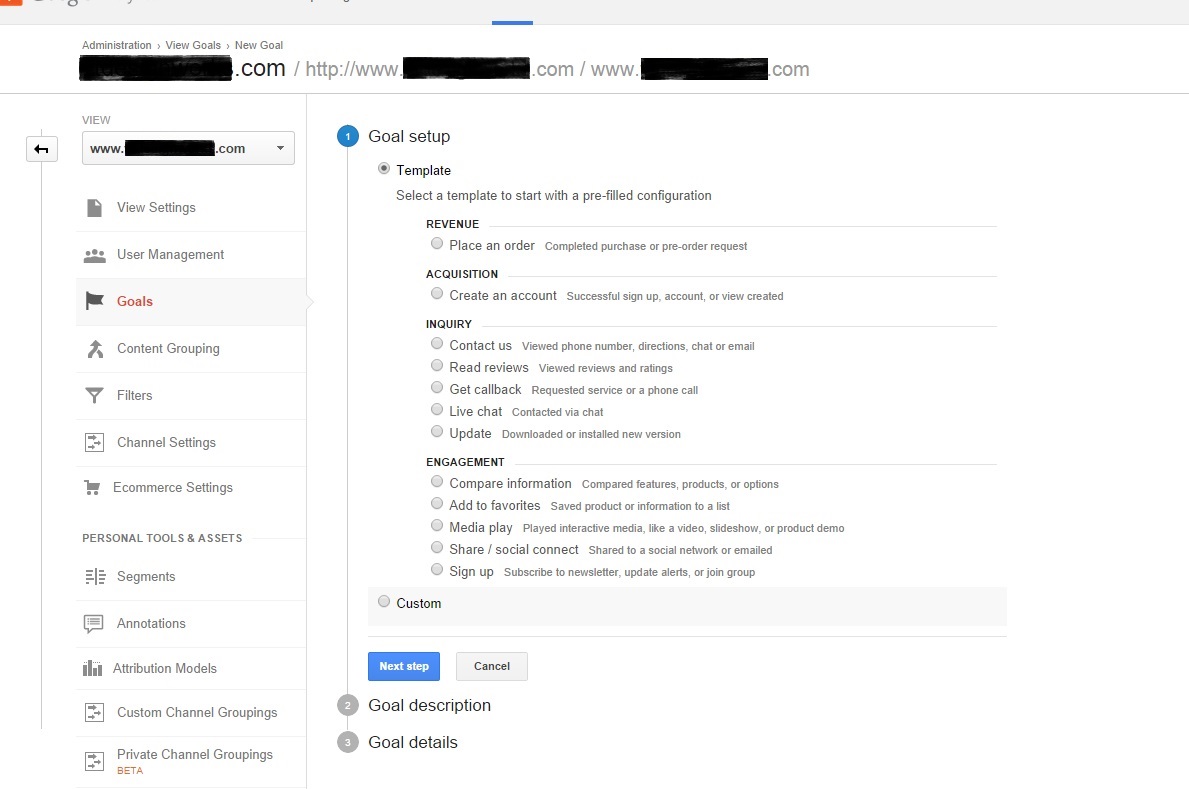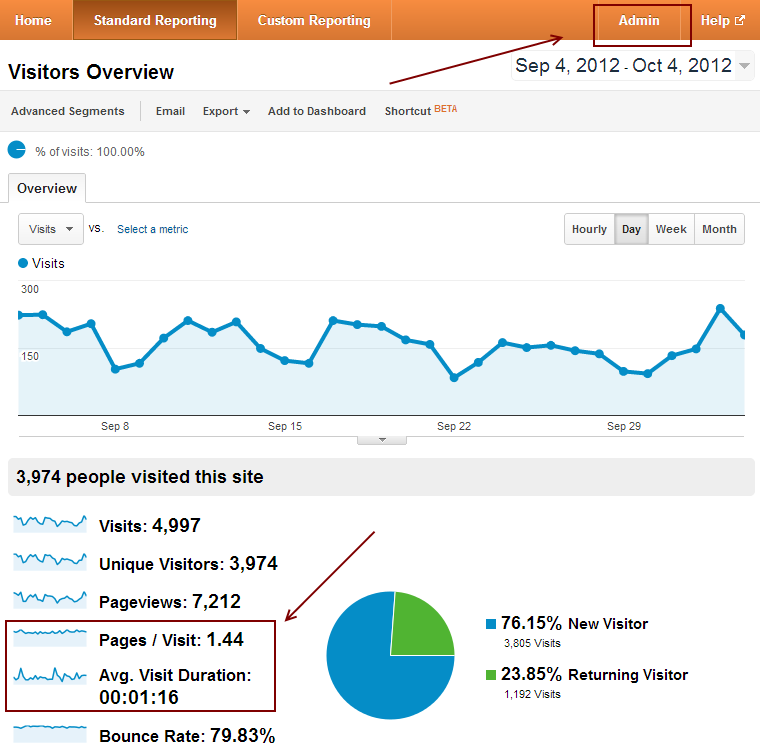Discover the Limitations of Google Analytics Goals: Unveiling the Information Kind That Remain Untrackable
As services progressively rely on data-driven decision-making, understanding the limitations of devices like Google Analytics comes to be extremely important. While Google Analytics Goals deal useful understandings into individual communications, there exist information kinds that thwart monitoring, posturing obstacles to an extensive understanding of customer actions. These untrackable information types raise questions regarding the precision and completeness of the analytics data that companies greatly depend upon for their electronic techniques. Curious to discover the covert blind spots in your data evaluation process?
Insufficient Customer Journey Tracking
Insufficient user trip monitoring within Google Analytics can hinder the capability to precisely evaluate user actions. When the user journey is not totally tracked, there are voids in the information that avoid a thorough understanding of exactly how users connect with a site. This absence of insight can cause missed out on opportunities for optimization and renovations to the individual experience.
One usual concern with incomplete customer trip tracking is the inability to see the full course that customers take in the past finishing an objective or leaving the site. Without this info, it is testing to identify where individuals may be coming across barriers or friction points that stop them from converting. Additionally, incomplete tracking can cover the effect of certain advertising initiatives or web site modifications on individual actions.
To address this constraint, it is critical to establish up proper monitoring devices within Google Analytics to capture the entire individual trip. This might entail establishing occasion monitoring, objective funnels, or making use of tools like Google Tag Manager to make sure that no important interactions go unrecorded. By obtaining an extensive sight of the customer trip, web site proprietors can make more enlightened choices to boost user interaction and drive conversions.
Attribution Obstacles
Browsing through acknowledgment difficulties in Google Analytics requires a complete understanding of exactly how various touchpoints contribute to the overall conversion procedure. Acknowledgment difficulties emerge from the complexity of contemporary customer journeys, where individuals communicate with multiple channels prior to transforming. Google Analytics offers different attribution versions like first touch, last touch, and linear, each offering a various viewpoint on just how credit rating is appointed to touchpoints along the conversion path. These models may not constantly properly show the true effect of each touchpoint on the conversion.
One typical attribution obstacle is the difficulty in connecting conversions to the right resource, particularly in cases where individuals communicate with multiple networks prior to converting. Furthermore, cross-device monitoring presents another attribution challenge, as users usually change in between devices throughout their trip, making it testing to track their communications seamlessly.
Offline Conversions
Provided the obstacles connected with attributing conversions precisely in online channels, the measurement of offline conversions provides a considerable opportunity for online marketers looking for a much more extensive understanding of their clients' trip. Offline conversions Our site refer to actions that clients absorb the physical globe, such as making acquisitions in brick-and-mortar shops or over the phone, going to events, or engaging with printed materials - what data is google analytics goals unable to track. These conversions are important for companies that run both online and offline, as they provide valuable insights right into the efficiency of marketing campaigns throughout various touchpoints
Tracking offline conversions traditionally presented a considerable difficulty for marketers, as it was testing to attach these activities back to certain online communications accurately. Nonetheless, with improvements in technology, such as the integration of CRM systems, distinct identifiers, and promo code codes, organizations can now bridge the space between online and offline information to get a more alternative view of client actions. By successfully measuring offline conversions, marketers can optimize their approaches, allot sources a lot more he said effectively, and ultimately enhance the overall client experience.
Cross-Device Monitoring
Cross-device tracking plays an essential duty in recognizing the interconnected nature of consumers' electronic communications throughout several tools. In today's omnichannel world, where users flawlessly change between desktop computers, tablet computers, and mobile phones, tracking their behavior throughout these devices is important for marketing experts to gain a comprehensive sight of their consumer journey.

Furthermore, privacy issues and guidelines such as GDPR and CCPA have even more challenging cross-device monitoring. With users requiring even more control over their information and increased restrictions on monitoring modern technologies, marketing professionals have to locate privacy-compliant and innovative ways to link customer interactions throughout devices.
Dynamic Content Interaction
Understanding individual involvement with dynamic content is essential in maximizing digital marketing techniques for enhanced audience communication. Dynamic material describes internet site components that alter based on user actions, preferences, or various other variables, supplying a customized experience. Tracking individual interactions with vibrant web content presents difficulties for typical analytics tools like Google Analytics.
While Google Analytics can track fundamental interactions like clicks and page sights, it might battle to record more nuanced involvements within dynamic web content. what data is google analytics goals unable to track. Metrics such as time invested in certain dynamic elements, float actions, or communications within pop-ups are often not easily measurable making use of common tracking techniques. This restriction hinders marketing experts' capability to fully understand how customers are involving with vibrant content and tailor their strategies accordingly

Conclusion
To conclude, Google Analytics objectives have limitations in tracking insufficient individual trips, attributing conversions accurately, capturing offline conversions, tracking cross-device communications, and gauging vibrant material engagement. These restrictions highlight the relevance of exploring additional monitoring methods and tools to obtain a much more extensive understanding of individual behavior and conversions past what Google Analytics can provide.
While Google Analytics Goals deal important insights right into customer interactions, there exist data kinds that thwart monitoring, posing obstacles to a thorough understanding of customer behavior.Incomplete user trip tracking within Google Analytics can impede the capability to properly examine customer actions. When the user trip is not completely tracked, there are spaces in the data that avoid a detailed understanding of how individuals interact with a web site.One usual issue with incomplete user journey monitoring is the failure to see the complete path that customers take before finishing a goal or leaving the website. By getting a detailed sight of the user trip, internet site owners can make even more educated decisions to improve individual engagement and drive conversions.